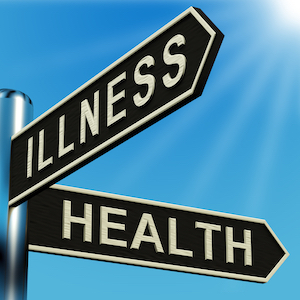By Denise Cabrera
As the healthcare landscape has evolved to value-based care, employers, payers and pharmacy benefit managers (PBMs) have implemented new strategies to improve quality of care and affordability. Ninety percent of the nation’s $3.5 trillion in annual health care expenditures are for chronic and mental health conditions.1
Who really controls your drug spend? It is not the PBM formulary alone, nor is it providers or hospitals. Looking across all stakeholders, we should begin and end with each patient’s individual journey. Their genetic code. Their lifestyle choices, especially smoking, eating a healthy diet, and exercise. Each individual makes decisions like these that can help prevent diabetes and heart disease. That’s why, now more than ever, it is imperative that healthcare is focused on the patient journey.
Educating and empowering individuals to take better control of their health starts with engagement and a comprehensive approach that considers both affordability and quality of care. Engaging them early in the journey is vital to prevent disease progression and comorbidities that will ultimately be much more costly if left untreated.
More than 37 million people in the United States have diabetes, representing 12% of the population. Predictive modeling indicates that 8 million people are undiagnosed. Due to lifestyle choices, it is estimated that 96 million adults have pre-diabetes, representing over 35% of the adult U.S. population.2
A newly diagnosed patient with Type 2 diabetes will incur an average annual healthcare spend of $25,000. If not well controlled with first line medication and lifestyle changes, patients can progress to more expensive self-injectables that cost as much as $40,000 per year. If insulin is added, the cost doesn’t increase significantly. But it does indicate disease progression, specifically microvascular and macrovascular damage that can cause poor blood circulation, damage to the retina, heart disease, stroke, kidney failure and amputation of feet or legs.3
Heart disease is the No. 1 cause of death in the U.S., according to the Centers for Disease Control and Prevention. Nearly 860,000 Americans die every year from heart disease and stroke combined, representing one-third of all-cause mortality. The cost of care for these diseases is a significant burden, costing our health care system $200 billion per year and resulting in an additional $130 billion in lost productivity for employers.3
Patients with diabetes are typically treated with drugs to manage their blood glucose (sugar). Consideration should also be given to managing their triglycerides (the most common type of fat) and cholesterol. Standard treatment guidelines include close monitoring of cardiovascular disease, and many patients are placed on a drug such as an ACE inhibitor to control their blood pressure and improve blood circulation. This is vital to ensure adequate blood circulation to their kidneys and lower extremities (legs and feet).
The year 2021 marked the 100th anniversary of the discovery of insulin, a life saving therapy for millions of people. Insulin prices have increased 600 percent over the last 20 years causing many consumers to be at risk of non-adherence due to cost.4
Solving the Affordability Issue – Legislation Influence
The Inflation Reduction Act, a spending package Congress approved in 2022, capped insulin out-of-pocket costs at $35 for Americans with Medicare. This does not apply to consumers with commercial insurance plans who may pay the full price for medications under high-deductible plans. For these individuals, out-of-pocket expenses can be $1,000 or more a month on insulin alone.5
Eli Lilly, a manufacturing pioneer in diabetes treatments, recently announced a 70% cost reduction for two of its most popular insulin products, Humulin and Humalog, for uninsured patients and those with private health insurance. Lilly also reduced the price for its generic lispro from $126 to $25 a vial. These price reductions are expected to improve medication adherence since individuals will be better able to afford them.These changes follow efforts by the federal government, the California state government, non-profits and some companies to make insulin more affordable for the more than 7 million Americans with diabetes who require it.6
Lilly’s actions have placed significant pressure on their competitors, Novo Nordisk and Sanofi. Making their insulin more affordable to cash-paying patients will encourage pharmacies like Mark Cuban’s Cost Plus Drug Co. and Blueberry Pharmacy to add them to their low-net-cost formularies.6
CivicaRx, a non-profit drug manufacturer owned by several Blues plans, intends to manufacturer affordable insulins in 2024. Civica will produce three insulins: glargine, lispro and aspart, which are comparable to Lantus, Humalog and Novolog, respectively. They will be available in vials and prefilled pens. Civica plans to set a recommended price of no more than $30 per vial and no more than $55 for a box of five pen cartridges, a significant discount to prices charged to uninsured individuals today. Their policy for pharmacies and others who choose to distribute Civica insulins reflects its philosophy that prices to consumers should be fair, reasonable and transparent, and no higher than the public, recommended price.7

Pharmacy Practice
McGriff
Denise.Cabrera@McGriff.com
McGriff.com
Resources and References
- https://www.cdc.gov/chronicdisease/about/costs/index.htm
- The Facts, Stats, and Impacts of Diabetes | CDC
- American Diabetes Association. Economic Costs of Diabetes in the U.S. 2018;41(5):917-928
- Prevalence and Correlates of Patient Rationing of Insulin in the United States: A National Survey acpjournals.org
- JAMA Health Forum – Health Policy, Health Care Reform, Health Affairs
- Eli Lilly Will Cap Insulin at $35: What to Know (healthline.com)
- Civica to Manufacture and Distribute Affordable Insulin – Civica Rx
